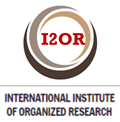Ejercicios de relajación en la recuperación física. Revisión Bibliográfica

Resumen
Se realizó una revisión bibliográfica sobre ejercicios de relajación en la recuperación física de estudiantes en la Filial de Ciencias Médicas “Dr. Efraín Benítez Popa”, de Bayamo, provincia Granma, con el objetivo de conocer el estado del arte sobre esta temática. Se realizó búsqueda documental en la biblioteca tradicional de esa institución, así como en el Centro Provincial de Información de Ciencias Médicas. Se identificaron como palabras clave “ejercicios de relajación” y recuperación física”, elementos que constituyeron la base para la formulación de la estrategia de búsqueda manual y automatizada. Se consultaron las principales bases de datos bibliográficas a partir del portal Infomed, teniendo en cuenta las unidades temáticas que contienen, así pudimos consultar documentos en Pubmed, Hinari, Ebscohost, Cochrane, Scopus, entre otras en soporte papel. De un total de 3046 documentos se seleccionaron aquellos que se publicaron en los últimos cinco años (2007 – 2011) y que reunieron el requisito de ser artículos originales y de revisión trabajando con un total de 113 de ellos que se reempaquetaron para la producción de esta revisión. El presente artículo brinda la información más actualizada disponible sobre esta temática y puede servir de fundamentación teórica para futuras investigaciones.
Palabras clave
Referencias
Spiegel H, Spiegel D. Trance and treatment: Clinical uses hypnosis. Washington, DC: American Psychiatric Press; 1987.
Martínez B. Hipnosis, teoría, métodos y técnicas. La Habana: Científico- Técnica; 1989.
Ortega R. Juegos de relajación en educación infantil: Los más pequeños aprenden a respirar. Rev Dig Investig Educ. 2006, junio 15, 22 (1):320-25.
Benítez Grande-Caballero J. La mejora del alumnado y del grupo a través de la relajación en el aula [Internet]. 2001[Citado 09 Jul 2002].Barcelona: CISPRAXIS. Disponible en: http://www.infantil.Profes.net
Chóliz M. Desarrollo de un procedimiento de respiración para el tratamiento del insomnio. Fundamentos teóricos y evidencia experimental. An Modif Conduct 1993; 19 (65): 421-32.
Carrió MC, Botella C, Ballester R. La eficacia del entrenamiento en respiración lenta y de la terapia cognitiva focal en un caso de trastorno por angustia con agorafobia. An Psicol. 1996; 12 (1): 1-17.
Bailey L. Music therapy in pain management. J Pain & Sympt Manag 1986; 1(1): 25-7.
Chóliz M, Capafons A. Revisión conceptual del biofeedback. An Modif Conduct 1990; 16(49):395-416.
González H, Miguel-Tobal JJ. Aplicaciones de la técnica de hipnosis en el ámbito de la modificación cognitivo-conductual. Inform Psicol. 1993; 53:41-51.
Schultz JH. El entrenamiento autógeno: autorrelajación concentrativa. 4ª. ed. Barcelona: Científico-Médica; 1980.
Bueno AM, Buceta JM, Amigo I. Efectos multidimensionales de un programa de entrenamiento en relajación progresiva aplicado a sujetos con estados de ansiedad. Rev Psicol Gen Aplic. 1986; 41:653-66.
García-Trujillo MR, de Rivera JLG. Cambios fisiológicos durante los ejercicios de meditación y relajación profunda. Psiquis. 1992; 13: 279-82.
Neuner F, Schauer E, Catani C, Ruf M, Elbert T. Post-tsunami stress: a study of posttraumatic stress disorder in children living in three severely affected regions in Sri Lanka. J Trauma Stress. 2006; 19(3):339-47.
Rose S, Bisson J, Wessely S. A systematic review of single-session psychological interventions ('debriefing') following trauma. Psychother Psychosom. 2003; 72(4):176-84.
Van Emmerik AA, Kamphuis JH, Hulsbosch AM, Emmelkamp PM. Single session debriefing after psychological trauma: a metaanalysis. Lancet. 2002, 360(9335):766-71.
Stallard P. Psychological interventions for post-traumatic reactions in children and young people: a review of randomized controlled trials. Clin Psychol Rev 2006; 26(7):895-911.
Cohen JA, Deblinger E, Mannarino AP, Steer RA. A multisite randomized controlled trial for children with sexual abuserelated PTSD symptoms. J Am Acad Child Adolesc Psychiatry. 2004, 43(4):393-402.
Cohen JA, Mannarino AP, Perel JM, Staron V. A pilot randomized controlled trial of combined trauma-focused CBT and sertraline for childhood PTSD symptoms. J Am Acad Child Adolesc Psychiatr. 2007; 46(7):811-9.
Smith P, Yule W, Perrin S, Tranah T, Dalgleish T, Clark DM. Cognitive behavioral therapy for PTSD in children and adolescents: a preliminary randomized controlled trial. J Am Acad Child Adolesc Psychiatr 2007; 46(8):1051-61.
Stein BD, Jaycox LH, Kataoka SH, Wong M, Tu W, Elliott MN, Fink A. A mental health intervention for schoolchildren exposed to violence: a randomized controlled trial. JAMA. 2003; 290(5):603-11.
Schauer M, Neuner F, Elbert T. Narrative Exposure Therapy (NET) – A short term intervention for Traumatic Stress Disorders after War, Terror or Torture. Seattle: Hogrefe & Huber; 2005.
Bichescu D, Neuner F, Schauer M, Elbert T. Narrative exposure therapy for political imprisonment-related chronic posttraumatic stress disorder and depression. Behav Res Ther. 2007; 45(9):2212-20.
Neuner F, Schauer M, Klaschik C, Karunakara U, Elbert T. A comparison of narrative exposure therapy, supportive counseling, and psychoeducation for treating posttraumatic stress disorder in an african refugee settlement. J Consult Clin Psychol. 2004; 72(4):579-87.
Schaal S, Elbert T, Neuner F. Narrative Exposure Therapy versus group Interpersonal Psychotherapy – a controlled clinical trial with orphaned survivors of the Rwandan genocide. Psychother Psychosom. 2009;78(5):298-306.
Neuner F, Catani C, Ruf M, Schauer E, Schauer M, Elbert T. Narrative Exposure Therapy for the treatment of child and adolescent war victims: From neurobiology to field intervention. Child Adolesc Psychiatr Clin North America. 2008; 17: 641-64.
Onyut LP, Neuner F, Schauer E, Ertl V, Odenwald M, Schauer M, Elbert T. Narrative Exposure Therapy as a treatment for child war survivors with posttraumatic stress disorder: two case reports and a pilot study in an African refugee settlement. BMC Psychiatr. 2005; 5:7.
Schauer E, Neuner F, Elbert T, Ertl V, Onyut LP, Odenwald M, Schauer M. Narrative Exposure Therapy in Children: a Case Study. Intervention. 2004; 2(1):18-32.
Gordon JS, Staples JK, Blyta A, Bytyqi M. Treatment of posttraumatic stress disorder in postwar Kosovo high school students using mind-body skills groups: a pilot study. J Trauma Stress. 2004; 17(2):143 - 7.
Follette F, Palm KM, Pearson AN. Mindfulness and Trauma. Implications for treatment. J Ration- Emotv & Cognit Behav Ther. 2006; 24(1): 45-61.
Meiser-Stedman R, Yule W, Smith P, Glucksman E, Dalgleish T. Acute stress disorder and posttraumatic stress disorder in children and adolescents involved in assaults or motor vehicle accidents. Am J Psychiatr. 2005; 162(7):1381-3.
Elbert T, Schauer M, Schauer E, Huschka B, Hirth M, Neuner F. Trauma-related impairment in children – a survey in Sri Lankan provinces affected by armed conflict. Child Abuse Negl. 2009, 33(4):238-246.
Catani C, Jacob N, Schauer E, Kohila M, Neuner F. Family violence, war, and natural disasters: a study of the effect of extreme stress on children's mental health in Sri Lanka. BMC Psychiatr. 2008, 8:33.
Ruf M, Schauer M, Neuner F, Schauer E, Catani C, Elbert T. KIDNET – Narrative Expositionstherapie für Kinder. En:Landolt M, Hensel T. Traumatherapie bei Kindern und Jugendlichen. Göttingen: Hogrefe; 2007.
Neuner F, Onyut PL, Ertl V, Odenwald M, Schauer E, Elbert T. Treatment of posttraumatic stress disorder by trained lay counselors in an African fugee settlement: a randomized controlled trial. J Consult Clin Psychol. 2008; 6(4): 686-94.
Bisson JI, Ehlers A, Matthews R, Pilling S, Richards D, Turner S. Psychological treatments for chronic post-traumatic stress disorder. Systematic review and meta- analysis. Br J Psychiatr. 2007; 190: 97-104.
Caperchione CM, Kolt GS, Mummery WK. Physical activity in culturally and linguistically diverse migrant groups to Western society: a review of barriers, enablers and experiences. Sports Med. 2009; 39:167-77.
Brown WJ, Burton NW, Rowan PJ. Updating the evidence on physical activity and health in women. Am J Prev Med. 2007; 33:404-11.
Gilson ND, Puig-Ribera A, McKenna J, Brown WJ, Burton NW, Cooke CB. Do walking strategies to increase physical activity reduce reported sitting in workplaces: a randomized control trial. Int J Behav Nutr Phys Act. 2009; 6:43.
Sharpe PA, Granner ML, Hutto BE, Wilcox S, Peck L, Addy CL. Correlates of physical activity among African American and white women. Am J Health Behav. 2008; 32:701-13.
Blonk RWB, Brenninkmeijer V, Lagerveld SE, Houtman ILD. Return to work: A comparison of two cognitive behavioural interventions in cases of work-related psychological complaints among the self-employed. Work & Stress. 2006; 20:129-44.
Brouwers EPM, Terluin B, Tiemens BG, Verhaak PFM. Patients with Minor Mental Disorders Leading to Sickness Absence: A Feasibility Study for Social Workers’ Participation in a Treatment Programme. Br J Social Work 2006; 36:127-38.
Brouwers EPM, Tiemens BG, Terluin B, Verhaak PFM. Effectiveness of an intervention to reduce sickness absence in patients with emotional distress or minor mental disorders: A randomized controlled effectiveness trial. Psychiatry. 2006; 28:223-9.
Rebergen DS, Bruinvels DJ, van der Beek AJ, van Mechelen W. Design of a randomized controlled trial on the effects of counseling of mental health problems by occupational physicians on return to work: the COOP- study. BMC Public Health. 2007; 7:183.
Lander F, Fiche C, Tornemand H, Andersen JH, Kirkeskov L. Can we enhance the ability to return to work among workers with stress-related disorders? BMC Public Health. 2009; 9:372-6.
McClement S, Chochinov HM, Hack T, Hassard T, Kristjanson L, Harlos M. Dignity therapy: family member perspectives. J Palliat Med. 2007; 10(5):1076-82.
Schmitz TG, Goldbeck L. The effect of inpatient rehabilitation programmes on quality of life in patients with cystic fibrosis: A multi-center study. Health Qual Life Outc [Internet]. 2006 [Citado 09 Jun 2011]; 4:8. Disponible en: http://www.hglo.com/content/4/1/8
Oken BS, Zajdel D, Kishiyama S, Flegal K, Dehen C, Haas M, et al. Randomized, controlled, six-month trial of yoga in healthy seniors: effects on cognition and quality of life. Altern Ther Health Med. 2006; 12: 40-7.
Smith C, Hancock H, Blake-Mortimer J, Eckert K. A randomized comparative trial of yoga and relaxation to reduce stress and anxiety. Complement Ther Med. 2007; 15: 77-83.
Rose S, Bisson J, Wessely S. A systematic review of single-session psychological interventions ('debriefing') following trauma. Psychother Psychosom. 2003; 72(4):176-84.
Catani C, Kohiladeyy M, Ruf M, Schauer E, Elbert T, and Neuner F. Treating children traumatized by war and Tsunami: A comparison between exposure therapy and meditation-relaxation in North-East Sri Lanka. BMC Psychiatry 2009, 9:22. available from: http://www.biomedcentral.com/1471-244X/9/22.
Miller DK, Chibnall JT, Videen SD, Duckro PN. Supportive-Affective Group Experience for Persons with Life-Threatening Illness: Reducing Spiritual, Psychological, and Death-Related Distress in Dying Patients. J Palliat Med 2005; 8(2):333-43.
Bartholomew LK, Parcel GS, Kok G, Gottlieb NH. Planning Health Promotion Programs: An Intervention Mapping Approach. 2a ed. San Francisco : Jossy-Bass; 2006
Hildebrandt VH, Ooijendijk WTM, Hopman-Rock M. Trend Report Physical Activity and Health . Leiden, The Netherlands. TNO Quality of Life. 2007: 9-33.
Murta SG, Sanderson K, Oldenburg B. Process evaluation in occupational stress management programs: a systematic review. Am J Health Promot 2007; 21:248-54.
Proper KI, Koning M, Beek AJ van der, Hildebrandt VH, Bosscher RJ, van MW. The effectiveness of worksite physical activity programs on physical activity, physical fitness, and health. Clin J Sport Med. 2003; 13:106-17.
Cuadrado-Reyes J. Análisis de la influencia de la intensidad del entrenamiento sobre variables de control de la carga interna en deportes colectivos [tesis doctoral]. Universidad de Granada; [sa].
Kalezic N, Åsell M, Kerschbaumer H, Lyskov E. Physiological reactivity to functional tests in patients with chronic low back pain. J Musculoskelet Pain. 2007; 15:29-40.
Larsson B, Rosendal L, Kristiansen J, Sjøgaard G, Søgaard K, Ghafouri B, et al. Responses of analgesic and metabolic substances to 8 h of repetitive manual work in myalgic human trapezius muscle. Pain 2008;140: 479-90.
Kjellberg A, Wadman C. The role of the affective stress response as a mediator of the effect of psychosocial risk factors on musculoskeletal complaints – Part 1: Assembly workers. Int J Ind Ergon. 2007; 37:367-74.
Thieme K, Rose U, Pinkpank T, Spies C, Turk DC, Flor H. Psychophysiological responses in patients with fibromyalgia syndrome. J Psychosom Res. 2006; 61:671-9.
Lima Silva AE, De Oliveira FR, Nakamura FY, Gevaerd MS. Effect of carbohydrate availability on time to exhaustion in exercise performed at two different intensities. Braz J Med Biol Res. 2009; 42 (5) 404 – 12.
Enisele N. Heart rate and blood lactate concentrations as predictors of physiological load on elite soccer players during various soccer training activities. J Strength & Condit Res. 2005; 19(4): 799-804.
Londeree BR, Ames SA. Trend analysis of the % VO2 max-HR regression. Med Sci Sports. 1976; 8 (2): 123-5.
Montain SJ, Cheuvront SN, Sawka M.N. Exercise associated hyponatremia: quantitative analysis for understand the aetiology. Br. J. Sports Med. 2006;40: 98–106.
Naclerio F, Barriopedro I, Rodríguez G. Intensity measurement in strength trainings through subjective perception of effort. Kronos. 2009; 8 (14): 59-66.
Zhang Y, Bishop PA, Casaru C, Davis JK. A New Hand-Cooling Device to Enhance Firefighter Heat Strain Recovery. J Occupat Environm Hygiene. 2009; 6 (5): 283–88.
Reinold MM, Escamilla R, Wilk KE. Current concepts in the scientific and clinical rationale behind exercises for glenohumeral and scapulothoracic musculature. J Orthop & Sports Phys Ther. 2009; 39:106-17.
Reinold MM, Macrina LC, Wilk KE, Fleisig GS, Dun S, Barrentine SW, et al. Electromyographic analysis of the supraspinatus and deltoid muscles during 3 common rehabilitation exercises. J Athl Train. 2007; 42:464-9.
Townsend H, Jobe FW, Pink M, Perry J. Electromyographic analysis of the glenohumeral muscles during a baseball rehabilitation programme. Am J Sports Med. 1991; 19:264-72.
Alexiou H, Coutts AJ. A comparison of methods used for quantifying internal training load in women soccer players. Intern J Sports Physiol & Perform. 2008; 3(3): 320-30.
Barbero Álvarez JC, Granda J, Soto VM. Análisis de la frecuencia cardiaca durante la competición en jugadores profesionales de fútbol sala. Apuntes. 2004; 77: 71 – 8.
Casa, D.J. Clarkson, P.M. y Roberts W.O. American College of Sports Medicine roundtable on hydration and physical activity: consensus statements. Curr Sports Med Rep. 2005; 4:115–27.
Lucia A, Hoyos J, Santalla A, Earnest C, Chicharro JL. Tour de France versus Vuelta a España: which is harder? Med Sci Sports Exerc. 2003;35(5):872–8.
Puetz TW. Physical activity and feelings of energy and fatigue: epidemiological evidence. Sports Med. 2006; 36:767-80.
Uhl TL, Carver TJ, Mattacola CG, Mair SD, Nitz JA. Shoulder musculature activation during upper extremity weight bearing exercise. J Orthop Sports Phys Ther. 2003; 33:109-17.
Lintner D, Mayol M, Uzodinma O, Jones R, Labossiere D. Glenohumeral Internal Rotation Deficits in Professional Pitchers Enrolled in an Internal Rotation Stretching Program. Am J Sports Med. 2007; 35:617- 21.
Castro FJ. La relajación en educación física. Secuenciación de contenidos IES "Ruradia" de Jaén [Internet]. 2006 [citado 09 Jul 2010] Disponible en: http://www.efdeportes.com/efd93/relaja.htm
Van der Klink JJ, Van Dijk FJ. Dutch practice guidelines for managing adjustment disorders in occupational and primary health care. Scand J Work Environ Health. 2003; 29:478-87.
Perski A. Rehabilitation of stress-related diseases goes on different phases and is often long-lasting. Läkartidningen. 2004; 101(14):1292-4.
Hurrell JJ Jr, Murphy LR. Occupational stress intervention. Am J Ind Med. 1996; 29(4):338-341.
Murphy LR. Stress management in work settings: a critical review of the health effects. Am J Health Promot. 1996; 11(2):112-35.
Bellarosa C, Chen PY. The effectiveness and practicality of occupational stress treatment interventions: a survey of subject matter expert opinions. J Occup Health Psychol. 1997; 2(3):247-62.
Van der Hek H, Plomp HN. Occupational stress treatment programmes: a practical overview of published effect studies. Occup Med .1997; 47(3):133-41.
Reynolds S. Interventions: what works. what doesn’t? Occup Med. 2000; 50:315-9.
Edwards D, Burnard P. A systematic review of stress and stress treatment interventions for mental health nurses. J Adv Nurs. 2003; 42(2):169-200.
Arthur AR. When stress is mental illness: A study of anxiety and depression in employees who use occupational stress counseling schemes. Stress and Health 2005; 21:273-80.
Frank JD. Persuasion and Healing.2a ed. Baltimore: The Johns Hopkins University Press;1973.
Becker N, Bondegaard TA, Olsen AK, Sjøgren P, Bech P, Eriksen J. Pain epidemiology and health related quality of life in chronic nonmalignant pain patients referred to a Danish multidisciplinary pain center. Pain. 1997; 73:393-400.
Bech P, Rasmussen NA, Olsen LR, Noerholm V, Abildgaard W. The sensitivity and specificity of the Major Depression Inventory. using the Present State Examination as the index of diagnostic validity. J Affect Disord. 2001; 66(2-3):159-64.
Olsen LR, Jensen DV, Noerholm V, Martiny K, Bech P. The internal and external validity of the Major Depression Inventory in measuring severity of depressive states. Psychol Med. 2003; 33:351-6.
Gordon JS, Staples JK, Blyta A, Bytyqi M: Treatment of posttraumatic stress disorder in postwar Kosovo high school students using mind-body skills groups: a pilot study. J Trauma Stress. 2004; 17(2):143-7.
Labrador FJ, De la Puente ML, Crespo M. Técnicas de control de la activación: relajación y respiración. En: Labrador FJ, Cruzado JA, Muñoz M. Manual de técnicas de modificación y terapia de la conducta. Madrid: Pirámide; 1993.
Davis M, McKay M, Eshelman ER. Técnicas de autocontrol emocional. Barcelona: Martínez Roca; 1985.
Jacobson E. Progressive Relaxation. Chicago: University of Chicago Press; 1929.
Schultz JH. Autogenic Training: a psychophysiologic approach to Psychotherapy. New York: Grune y Stratton; 1959.
Bailey L. Music theraphy in pain management. J Pain & Symtom Management. 1986; 1(1):25-7.
Carnwarth T, Miller D. Psicoterapia conductual en asistencia primaria. Manual práctico. Barcelona: Martínez Roca; 1989.
Labrador FJ. Relajación y desensibilización sistemática. Madrid: Fundación Universidad Empresa; 1992.
Morales A GM, Guerrero GS. Eficacia del programa de rehabilitación cardiaca en pacientes con cardiopatía isquémica. An Med (Mex). 2010; 55 (1): 24-8.
Enlaces refback
- No hay ningún enlace refback.
Copyright (c) 2018 MULTIMED Granma

Esta obra está bajo una licencia de Creative Commons Reconocimiento-NoComercial-CompartirIgual 4.0 Internacional.










